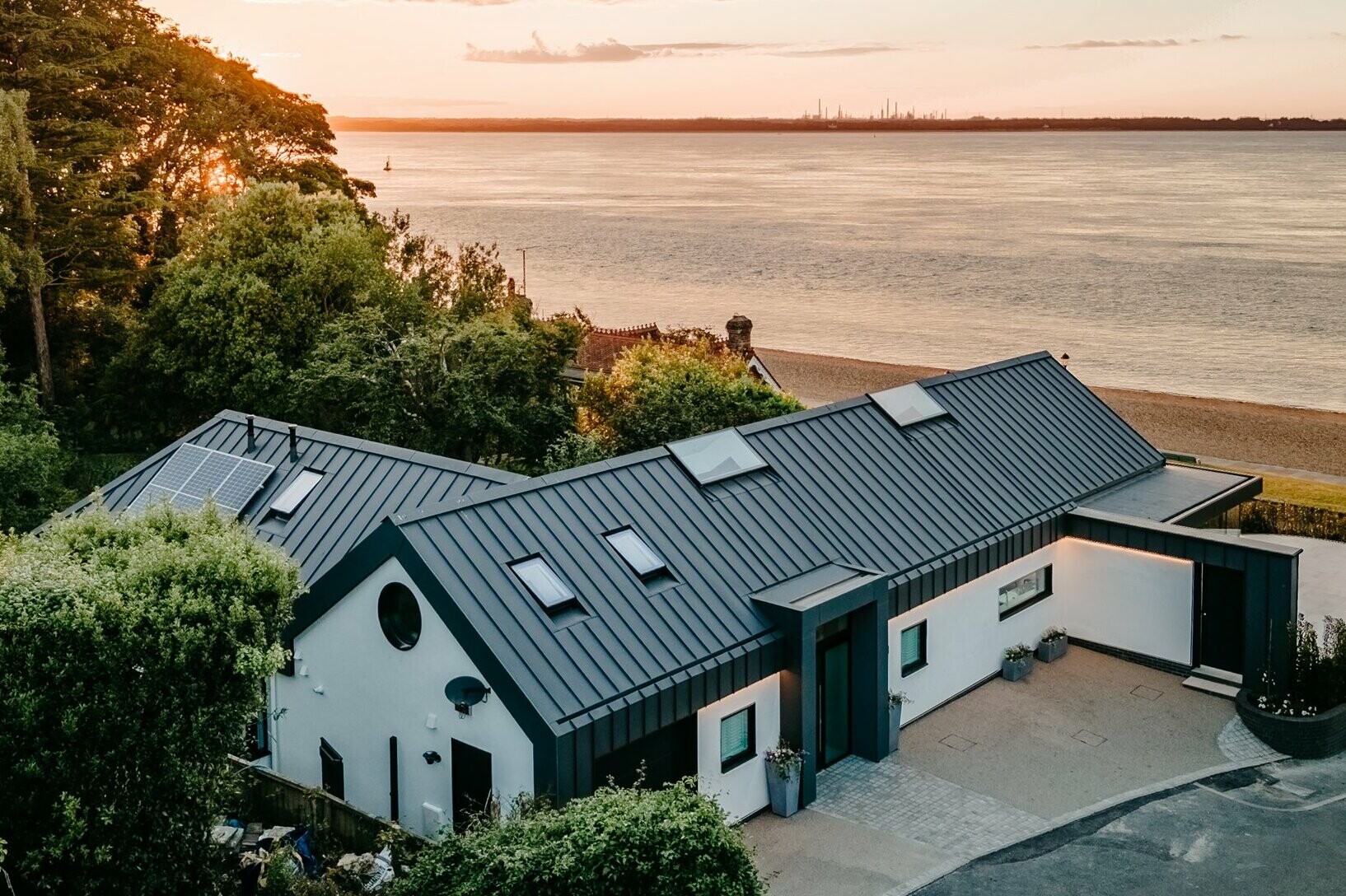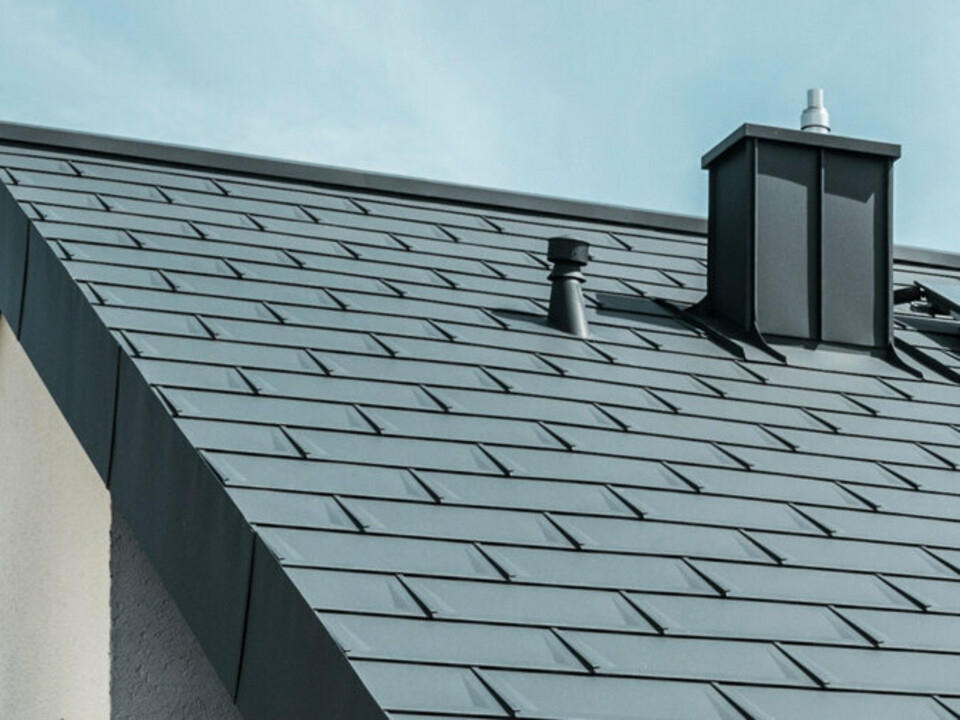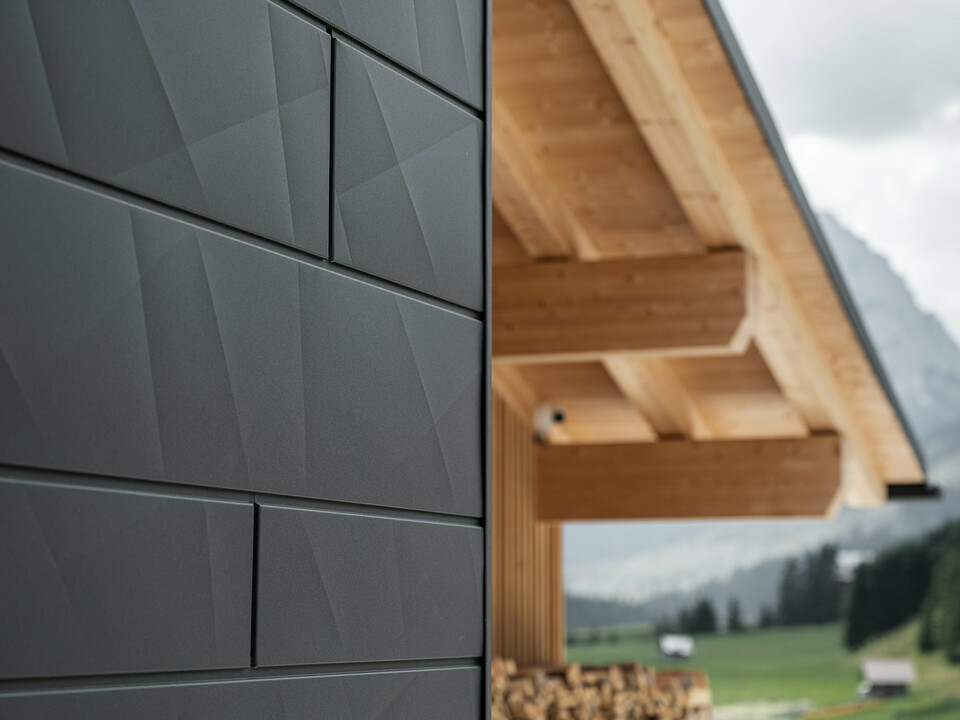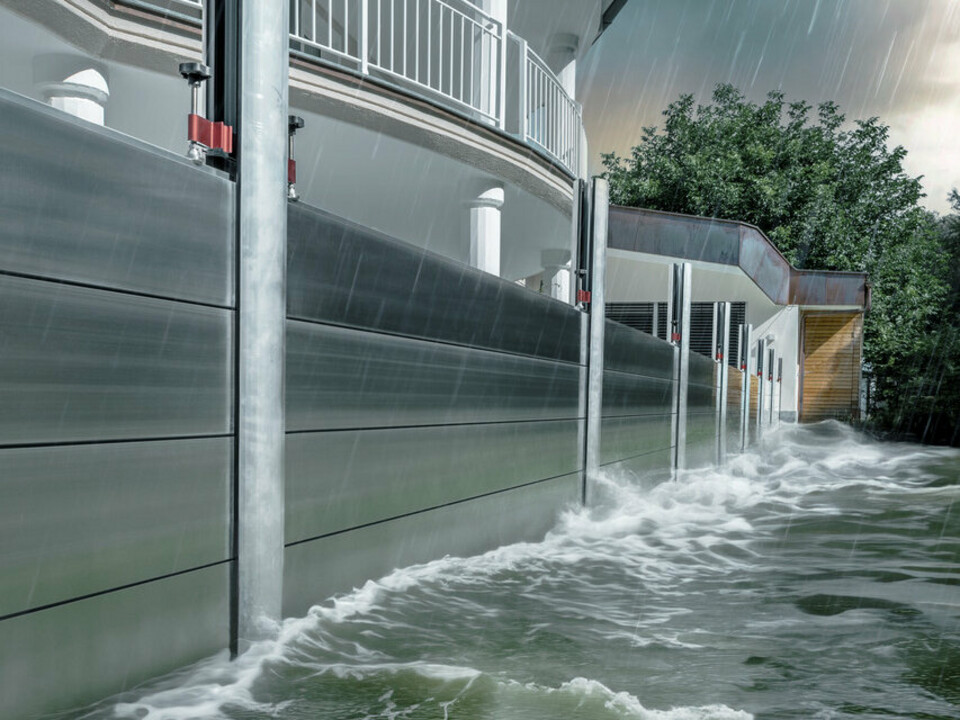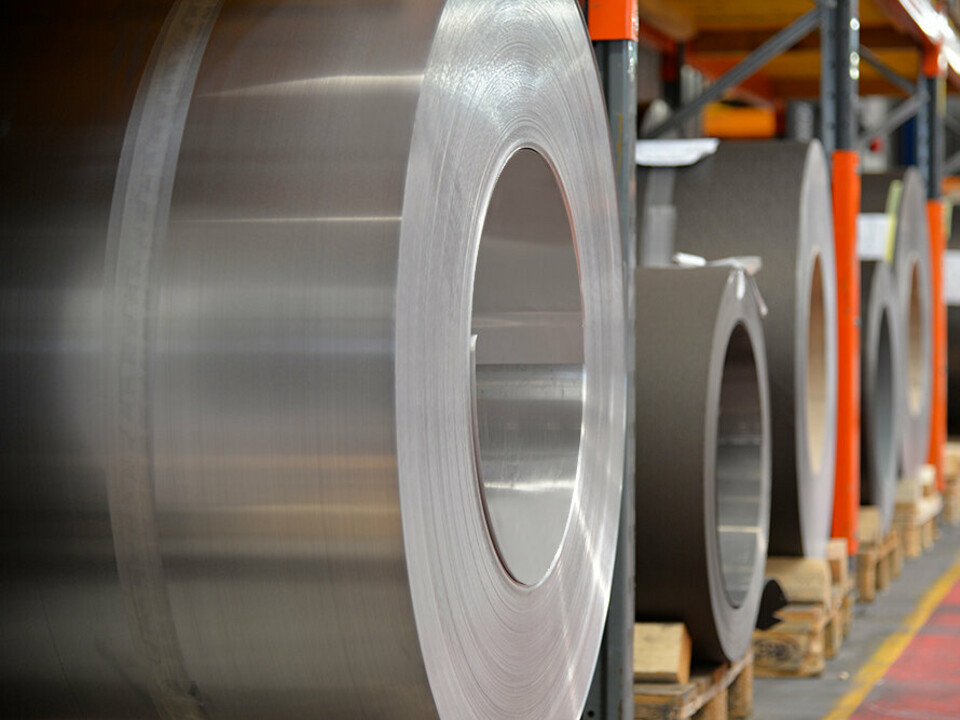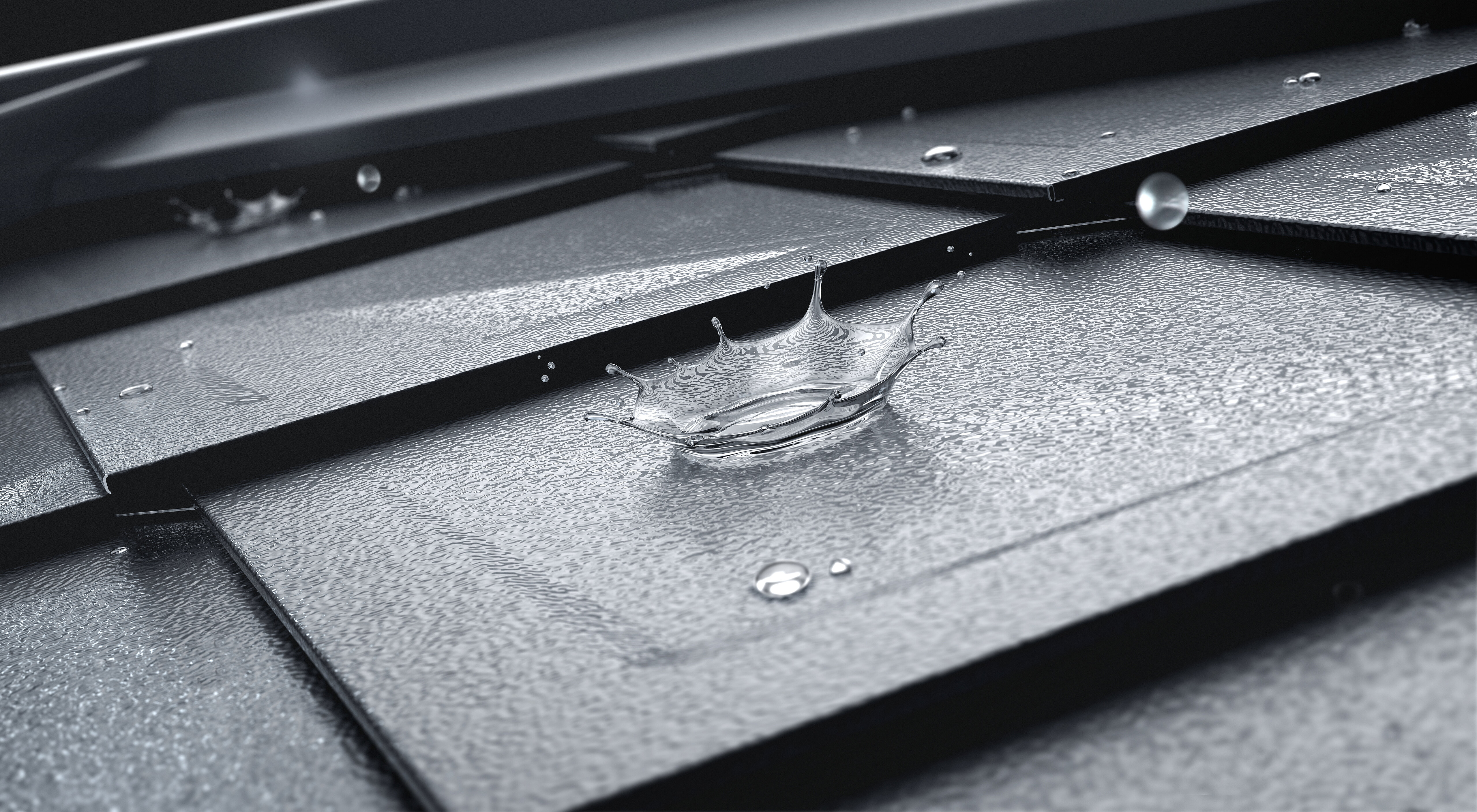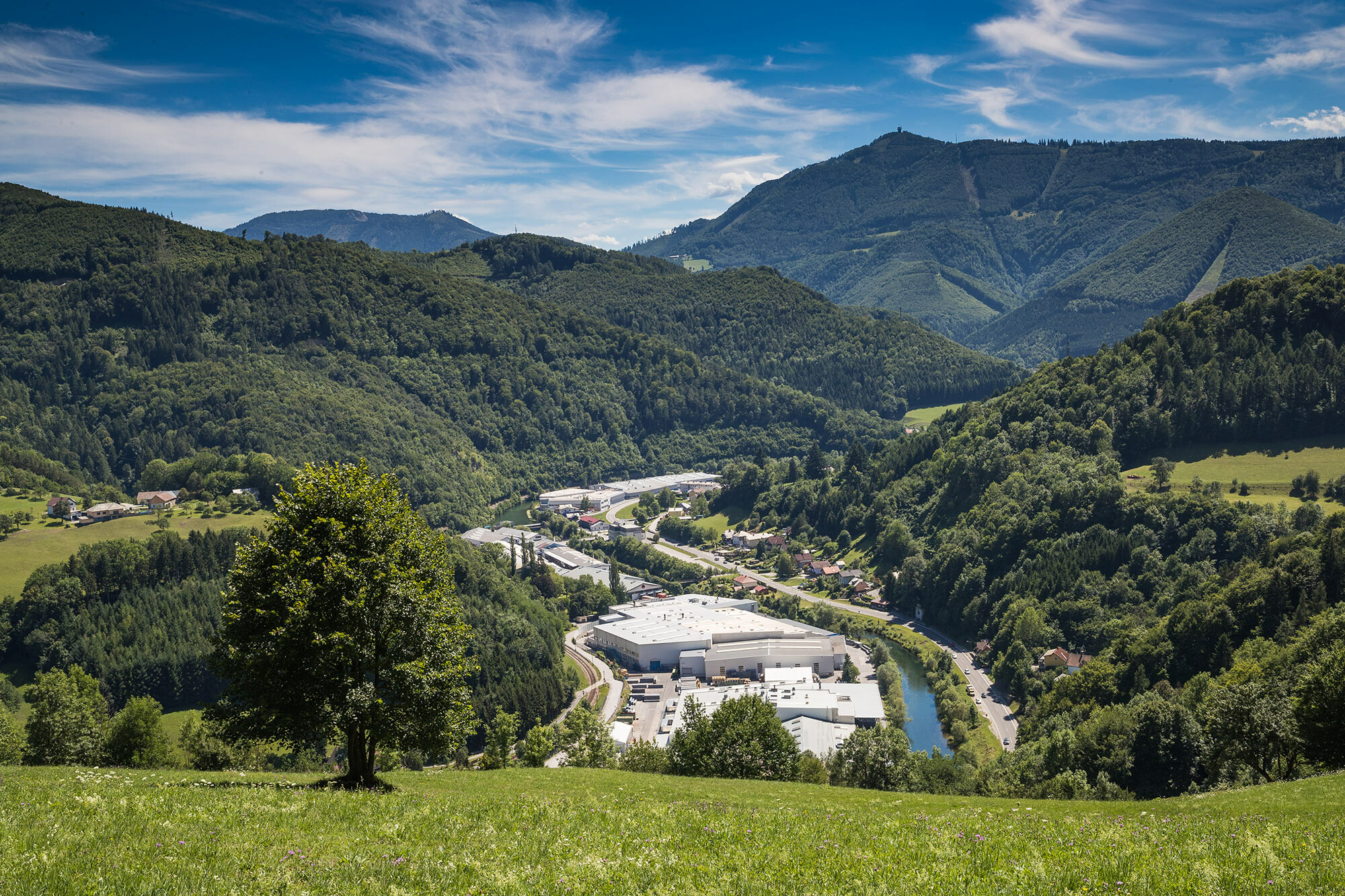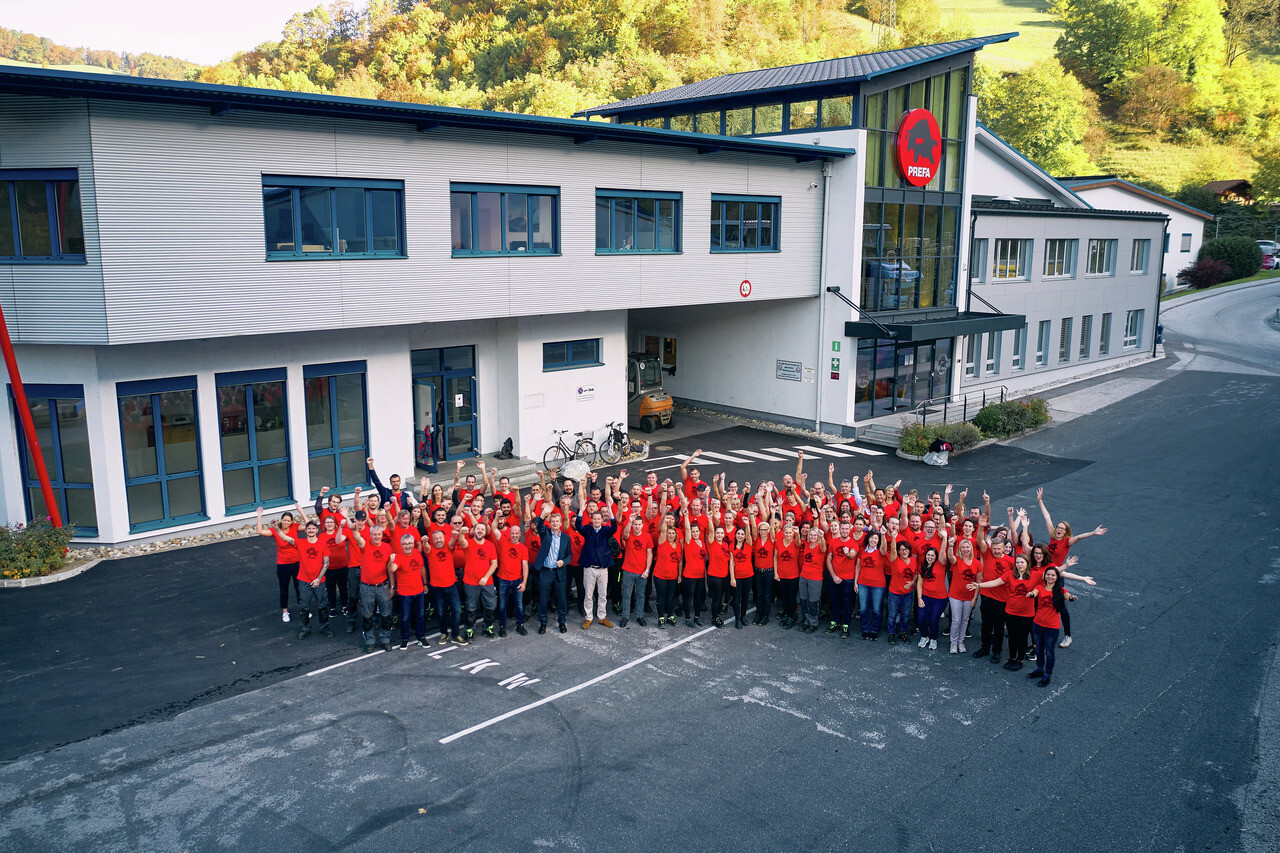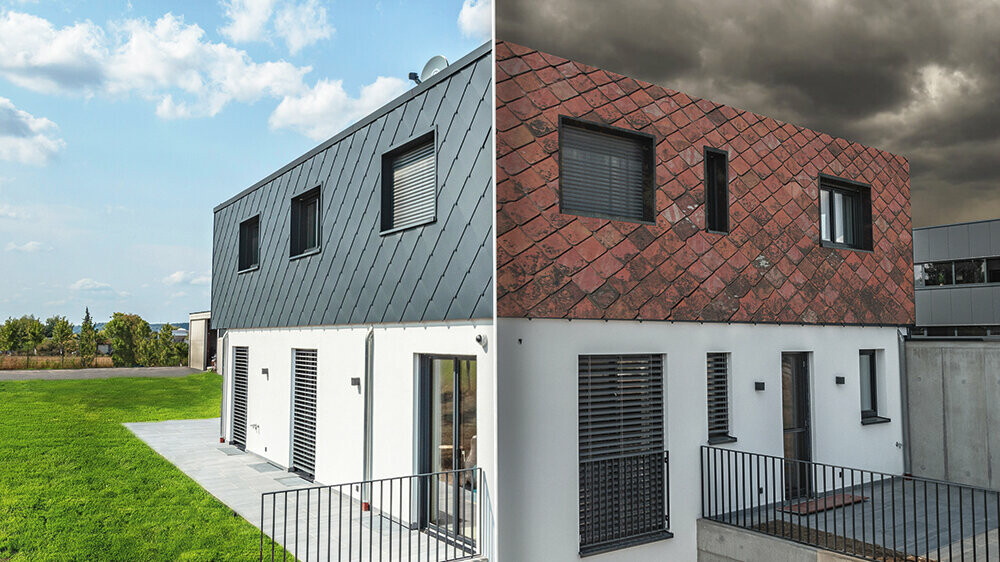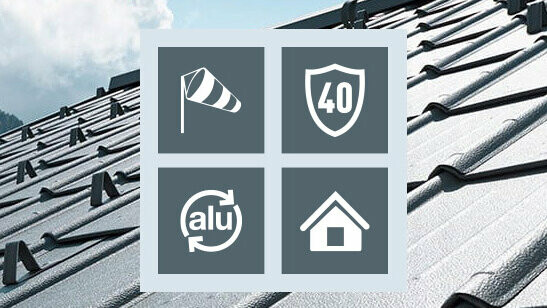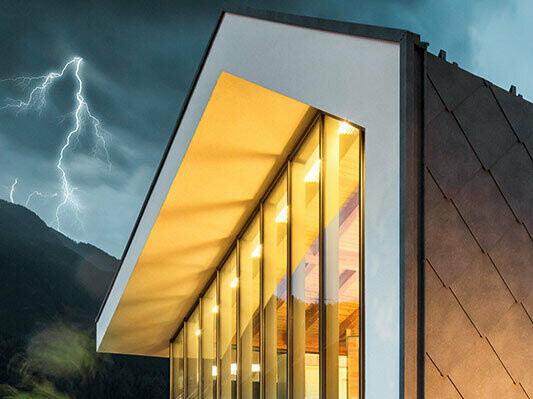The standard ÖVE/ÖNORM EN 62305-3, which applies in Austria, serves as the basis for this regulation. Country-specific standards and regulations must therefore be taken into account.
Metal roofs are defined as a ‘natural’ part of the lightning protection system according to the standard ÖVE/ÖNORM EN 62305-3. PREFA flat band roof panels (Prefalz and Falzonal) are therefore permitted as a natural part of the arrester and PREFA small format components (roof tiles, shingle, roof panels, roof rhomboid panels) as natural conductors in the lightning protection system (installation of an additional arrester and connection to the earth).
Caution: A few exceptions are defined in the standard, e.g. buildings at risk of explosion (ammunition dumps, mills, etc.), buildings that house a large number of people (schools, nurseries, etc.), transmitters, nuclear power plants, museums, etc.
The suitability of PREFA products as a natural part of the lightning protection system is therefore related to the building in question and should be assessed according to the applicable standards.
For information about the need for and design of the lightning protection system on a particular building, please consult a lightning protection system engineer or approved electrician who is authorised not only to perform the installation but also the legally prescribed acceptance of the lightning protection system. Ask the relevant municipal authority about any additional local regulations.
How does lightning form?
During a storm, electrostatic discharge is created by cloud-forming water droplets. The electrical charge produced manifests as lightning (an electric arc) in nature. The likelihood of lightning striking a building depends on a number of factors. These include, for example, the situation of the building, the frequency of lightning in the area, the height and area of the building. If lightning does strike a building, this usually happens on exposed parts of the building. This could be on protruding or taller parts of the building, for example, or on corners and edges.
It is not the building material but rather the distance of an object from the lightning bolt’s point of origin that determines where lightning will strike. Metal roofs therefore do not attract lightning. PREFA’s aluminium roof and façade systems can safely discharge lightning currents that occur when lightning strikes. PREFA products therefore make a significant contribution to building safety.
The external lightning protection system and its purpose
The external lightning protection system consists of an arrester, a conductor and an earthing device.
The ‘rolling sphere method’ is the most common method used to determine the preferred impact points during lightning protection planning. Arresters are installed at these locations to protect that part of the building; these ‘catch’ the lightning and ultimately discharge it to the earth via a conductor. If metal components or claddings are present on a building (e.g. a sheet-metal roof or façade), these can function as a natural part of the external lightning protection system subject to normative provisions. This can in turn yield substantial savings potential when installing the lightning protection system.
